Sunol Regional Wilderness: 'Wish Upon a Stream' Tule Boat
Sunol Regional Wilderness: 'Wish Upon a Stream' Tule Boat
Last weekend D. and I learned how to make a tule boat at the Sunol Regional Wilderness interpretive center.
Tules are plants that grow near streams, ponds and lakes. They can grow to over 10 feet tall. Their stems are filled with small chambers containing air. These pockets of air allow tules to float and to provide insulation when used to cover a dwelling. They are also very strong when they are green.
Native Californians used tules to make many things, such as boats, clothing, houses and rope. Many different Native Californians made tule boats in the past and Native Californians still make and use them today. Boats could be small for use by one person, or large enough for an entire family. Tule boats have been used for transportation, hunting and fishing. Today some Native Californians also use them for racing.
Naturalist Jeanne showed us how to make a miniature tule boat. Then we each put a wish on a piece of paper and put it in our boat, then launched them into Alameda Creek and watched them flow downstream toward San Francisco Bay, and, eventually, the vast and blue Pacific Ocean. We sounded out a rhythm using Ohlone clapping sticks and simple rattles during the launching, ushering our wishes on their way toward the sea.
D.'s pics first.
We see some Ohlone clapping sticks and a very fancy miniature tule boat before we begin.
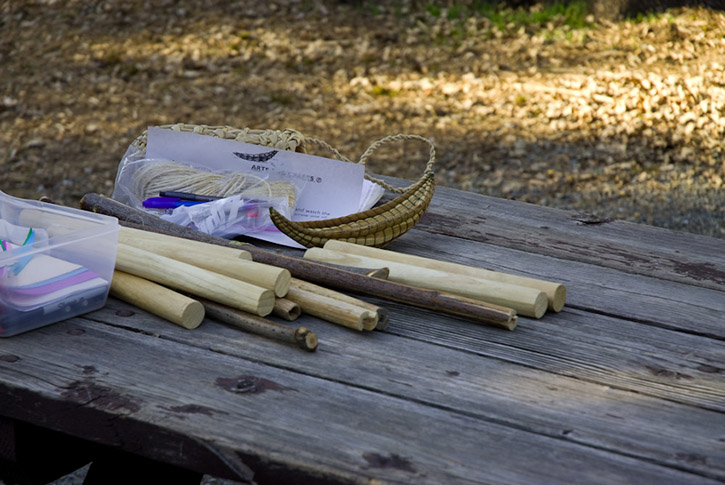
Naturalist Jeanne tells us about tules and the role they played in the lives of the native Ohlones.
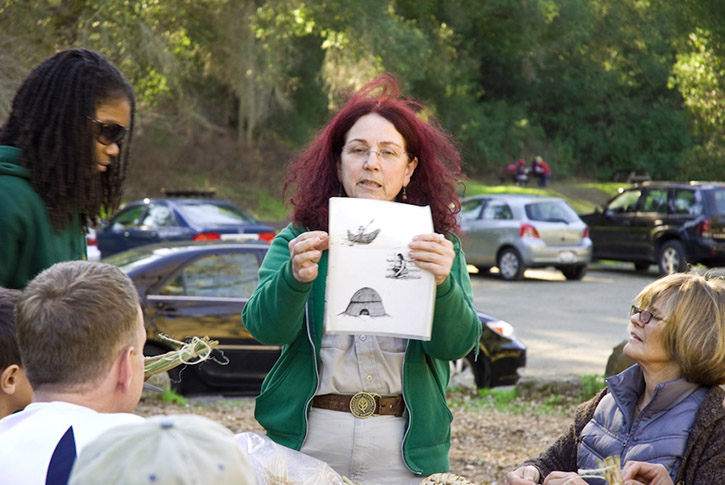
Our group works on our boats as Naturalist Jeanne shows us a photograph of a genuine, full-sized Ohlone tule boat on display at nearby Coyote Hills Regional Park.
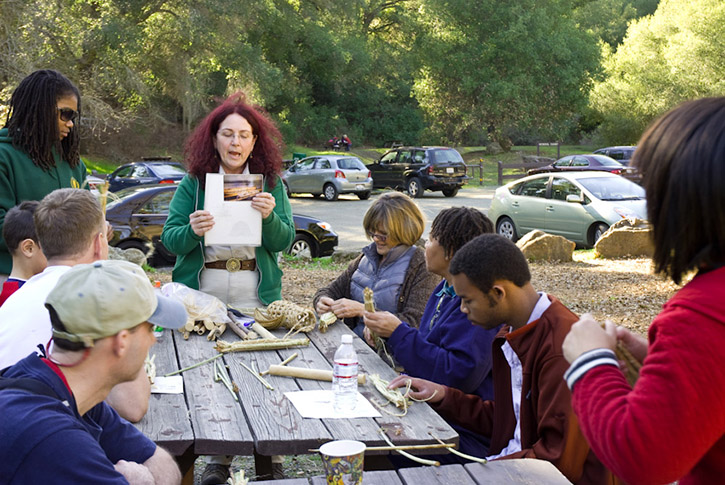
I work on shaping my finished tule boat into something resembling seaworthiness.
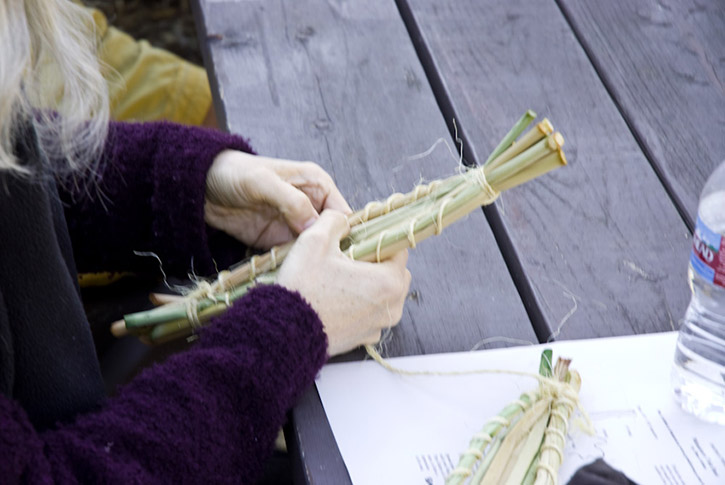
My finished tule boat, ship-shape and ready to receive my wish.
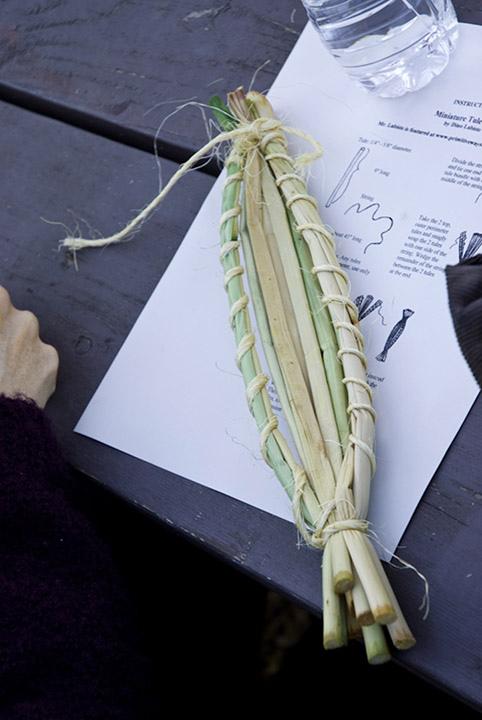
Our boats finished and our wishes put on small pieces of paper and tucked into our boats, we make our way down to Alameda Creek behind the visitor center.

We begin launching our tule boats one by one, as the rest sound out an accompanying rhythm on the clapping sticks and rattles.

As the sea refuses no river, Alameda Creek receives all our wishes and carries them off toward the vast Pacific Ocean.
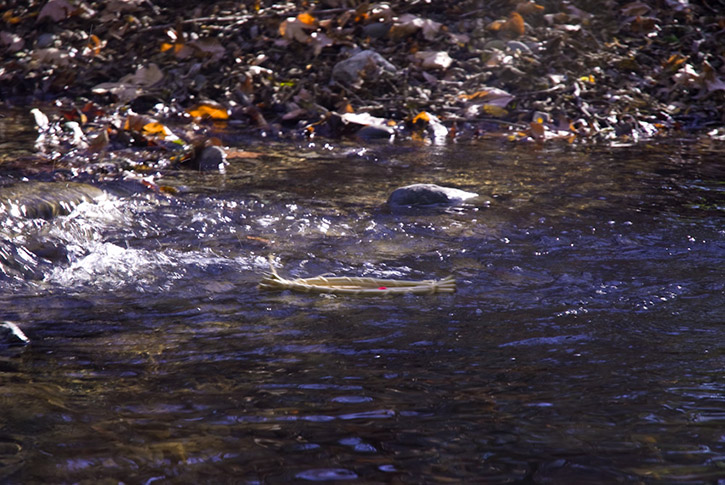
We continue on across the creek as Naturalist Jeanne leads us on an impromptu nature walk.

A medical mishap in the parking lot causes a distraction when paramedics have to be called, sirens blaring into the park.
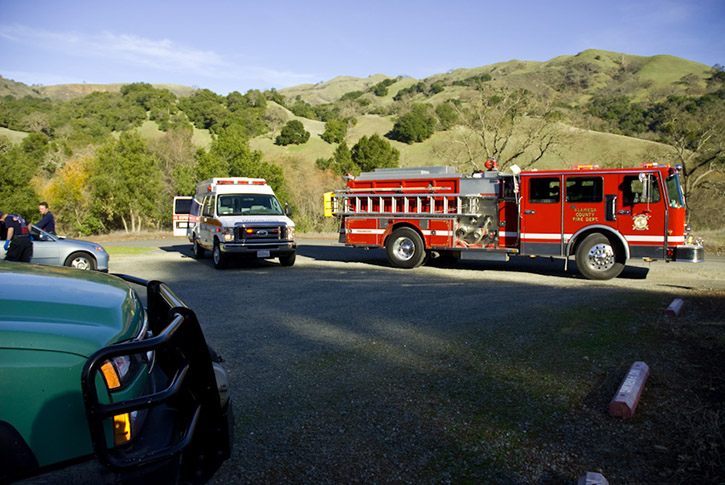
An Ohlone-style dwelling made from tules. An Ohlone could make one in about a day. It took the park staff several months to make this one.
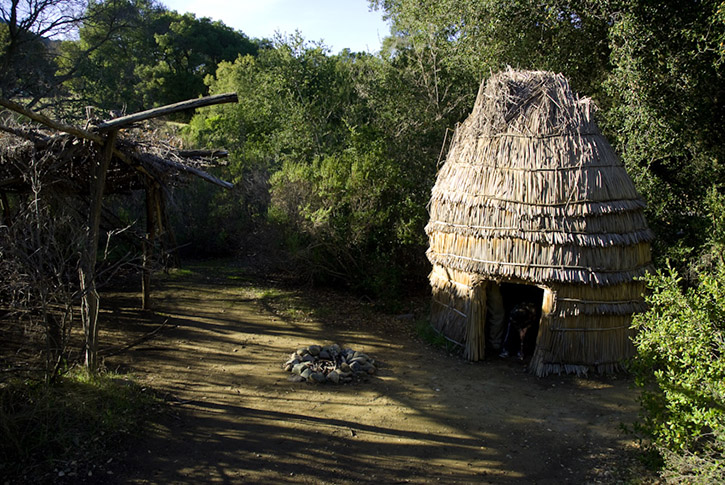
The "Wish Upon a Stream" tule boat program concluded, D. and I decide to walk for a while on the Hayfield Road trail, where bare sycamore branches grasp the sky.
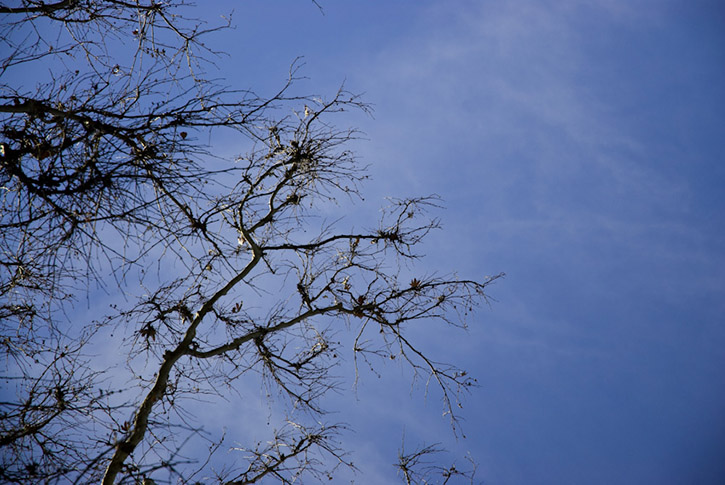
Beautiful green hillsides below Flag Hill.
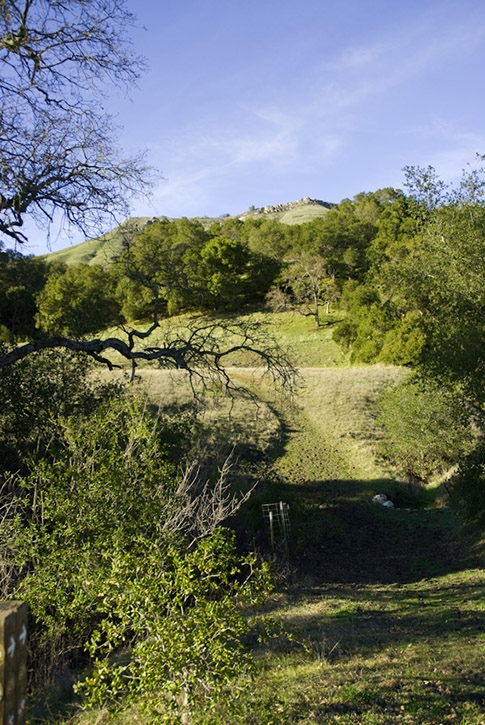
One of several nest boxes in the park, perhaps for a western bluebird.
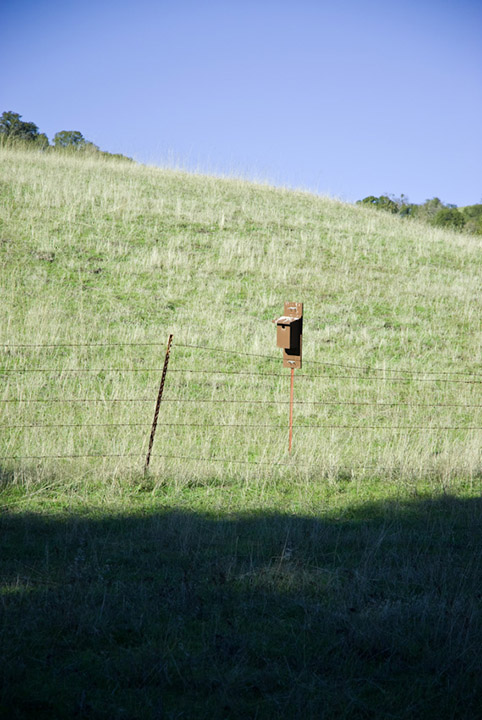
We take a side trip up a cool, shady ravine, full of maidenhair ferns.


An enormous fallen oak trunk in the ravine hosts fungus as it decomposes.

Looking up at the oaks lining the edge of the ravine.
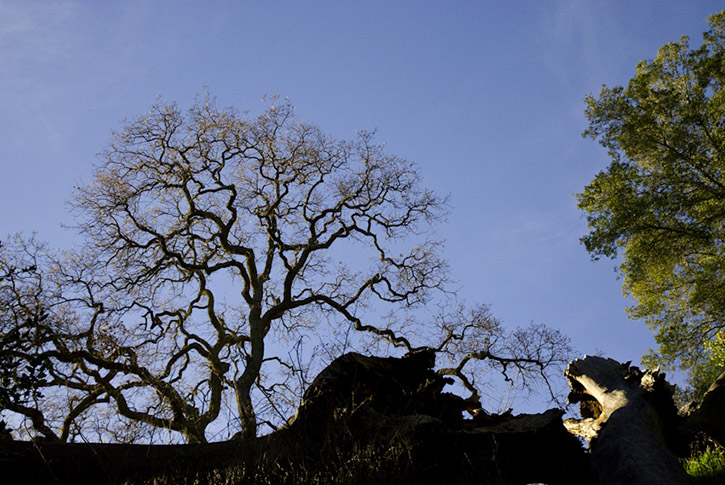
The ravine becomes choked with boulders, logs and thick vegetation, so we go back up to the trail. Some spectacular views await us in the late afternoon.
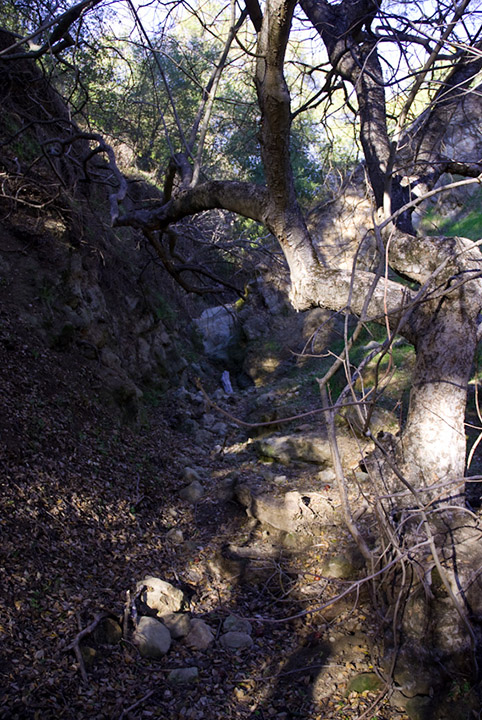
Galls on oak seedlings make them look alien in the late afternoon gloom once the sun has slipped behind Mission Peak to the west.
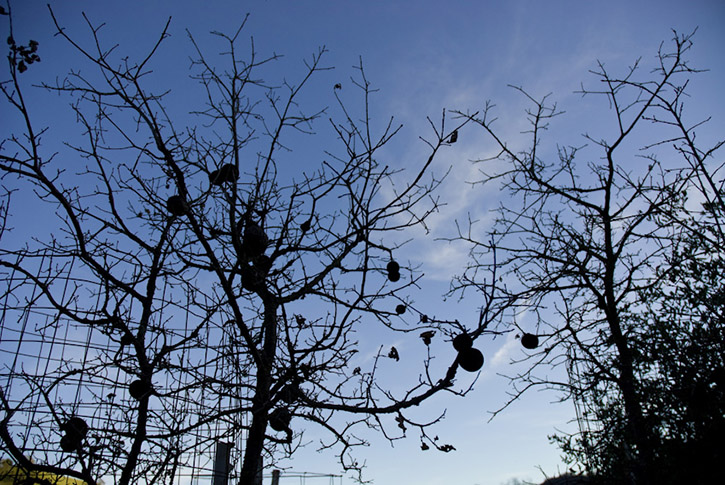
Some more of the beautiful Sunol scenery.
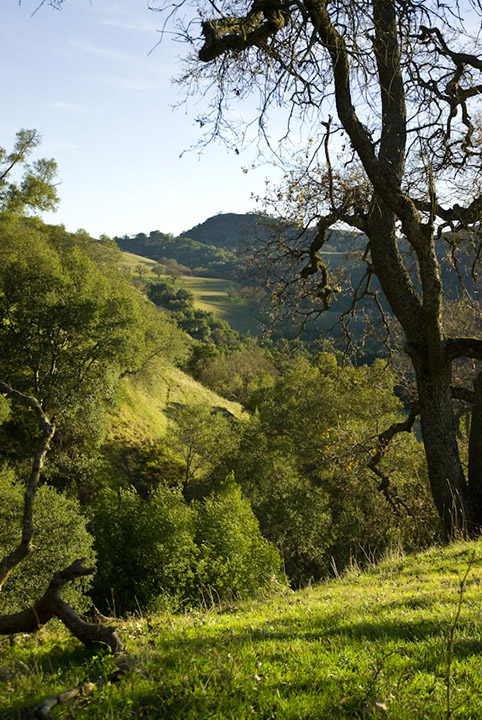
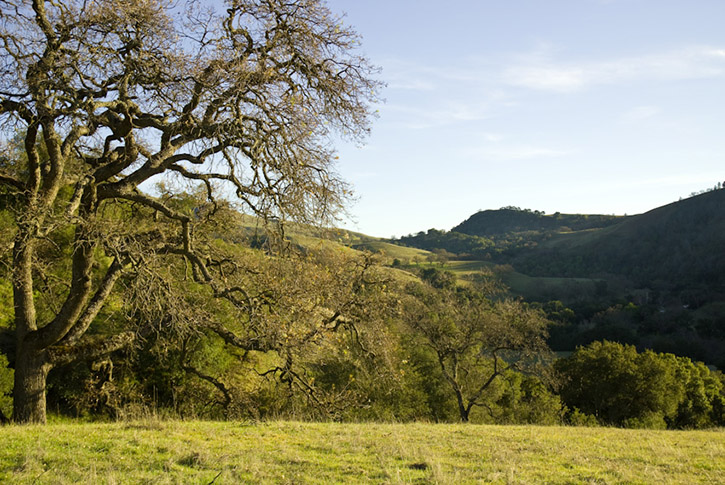
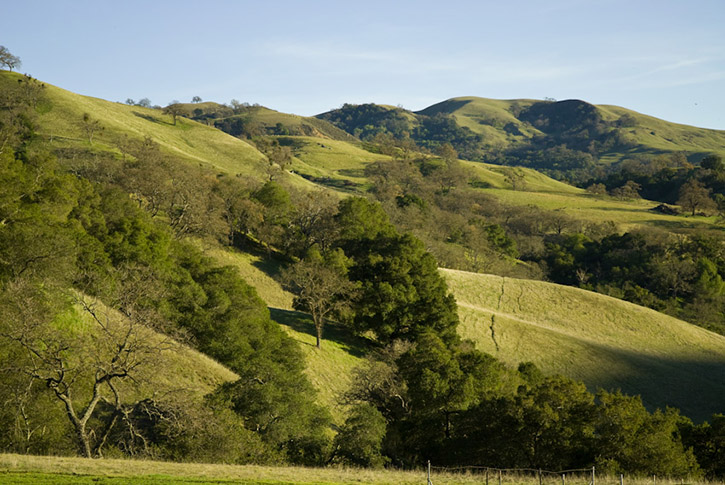
❧ ❧ ❧ ❧ ❧ ❧ ❧ ❧ ❧ ❧ ❧ ❧ ❧ ❧ ❧ ❧ ❧ ❧ ❧ ❧ ❧ ❧ ❧ ❧ ❧ ❧ ❧
Here are my pics.
Beautiful green hillsides below Flag Hill.
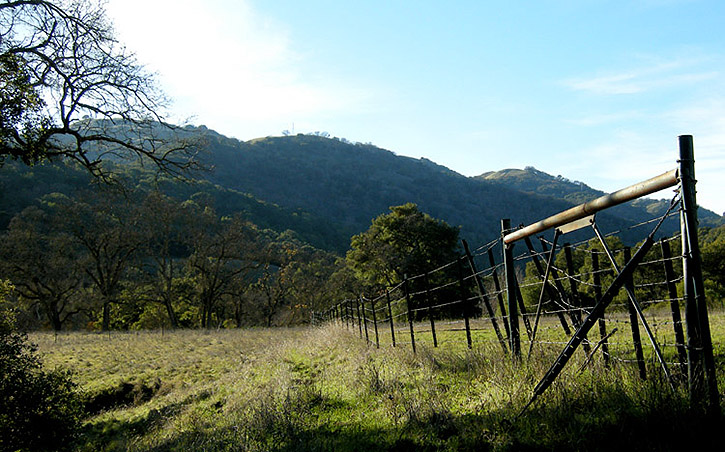
We find an opossum jawbone lodged in some debris on the bank of the ravine.
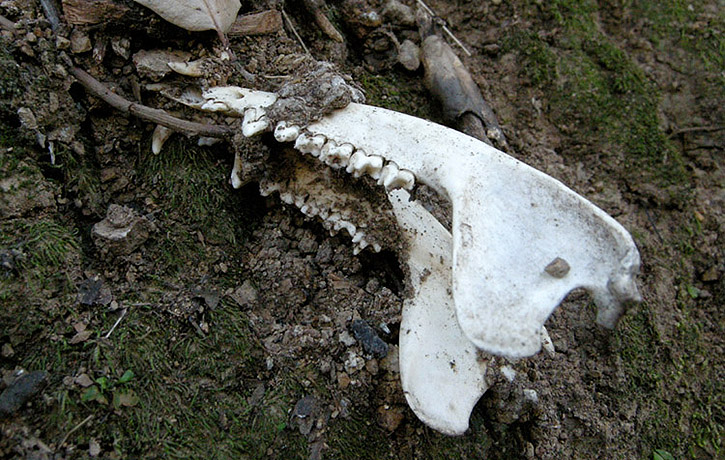
It's a different world in the ravine -- shady, quiet, green. A subtle river of cool air flows through, drawn down the ravine toward Alameda Creek.
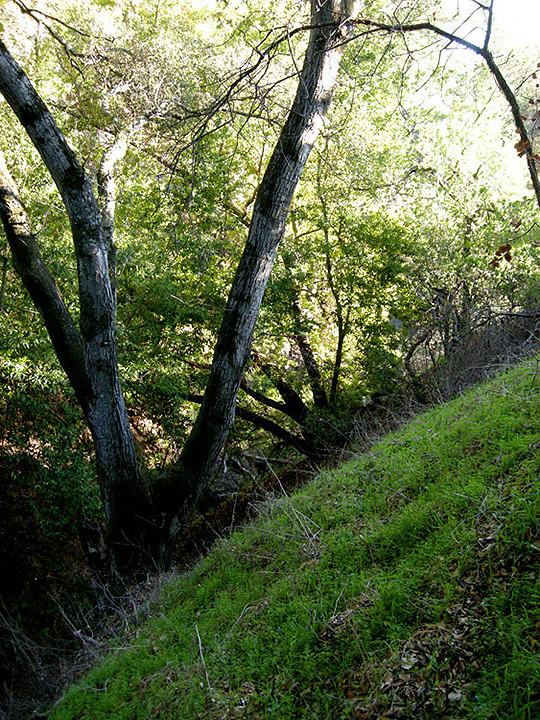
Beautiful views.
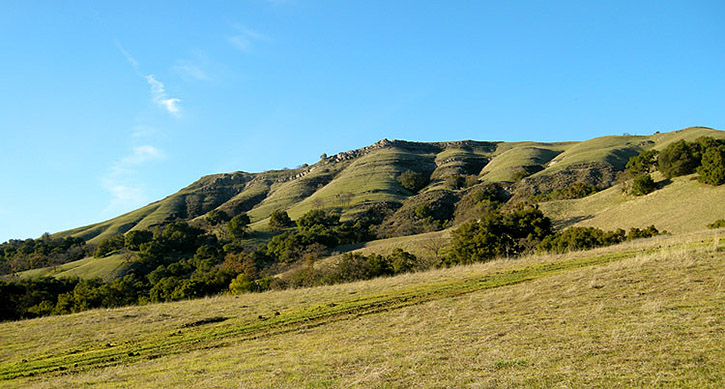

.
Last weekend D. and I learned how to make a tule boat at the Sunol Regional Wilderness interpretive center.
Tules are plants that grow near streams, ponds and lakes. They can grow to over 10 feet tall. Their stems are filled with small chambers containing air. These pockets of air allow tules to float and to provide insulation when used to cover a dwelling. They are also very strong when they are green.
Native Californians used tules to make many things, such as boats, clothing, houses and rope. Many different Native Californians made tule boats in the past and Native Californians still make and use them today. Boats could be small for use by one person, or large enough for an entire family. Tule boats have been used for transportation, hunting and fishing. Today some Native Californians also use them for racing.
Naturalist Jeanne showed us how to make a miniature tule boat. Then we each put a wish on a piece of paper and put it in our boat, then launched them into Alameda Creek and watched them flow downstream toward San Francisco Bay, and, eventually, the vast and blue Pacific Ocean. We sounded out a rhythm using Ohlone clapping sticks and simple rattles during the launching, ushering our wishes on their way toward the sea.
D.'s pics first.
We see some Ohlone clapping sticks and a very fancy miniature tule boat before we begin.

Naturalist Jeanne tells us about tules and the role they played in the lives of the native Ohlones.

Our group works on our boats as Naturalist Jeanne shows us a photograph of a genuine, full-sized Ohlone tule boat on display at nearby Coyote Hills Regional Park.

I work on shaping my finished tule boat into something resembling seaworthiness.

My finished tule boat, ship-shape and ready to receive my wish.

Our boats finished and our wishes put on small pieces of paper and tucked into our boats, we make our way down to Alameda Creek behind the visitor center.

We begin launching our tule boats one by one, as the rest sound out an accompanying rhythm on the clapping sticks and rattles.

As the sea refuses no river, Alameda Creek receives all our wishes and carries them off toward the vast Pacific Ocean.

We continue on across the creek as Naturalist Jeanne leads us on an impromptu nature walk.

A medical mishap in the parking lot causes a distraction when paramedics have to be called, sirens blaring into the park.

An Ohlone-style dwelling made from tules. An Ohlone could make one in about a day. It took the park staff several months to make this one.

The "Wish Upon a Stream" tule boat program concluded, D. and I decide to walk for a while on the Hayfield Road trail, where bare sycamore branches grasp the sky.

Beautiful green hillsides below Flag Hill.

One of several nest boxes in the park, perhaps for a western bluebird.

We take a side trip up a cool, shady ravine, full of maidenhair ferns.


An enormous fallen oak trunk in the ravine hosts fungus as it decomposes.

Looking up at the oaks lining the edge of the ravine.

The ravine becomes choked with boulders, logs and thick vegetation, so we go back up to the trail. Some spectacular views await us in the late afternoon.

Galls on oak seedlings make them look alien in the late afternoon gloom once the sun has slipped behind Mission Peak to the west.

Some more of the beautiful Sunol scenery.



❧ ❧ ❧ ❧ ❧ ❧ ❧ ❧ ❧ ❧ ❧ ❧ ❧ ❧ ❧ ❧ ❧ ❧ ❧ ❧ ❧ ❧ ❧ ❧ ❧ ❧ ❧
Here are my pics.
Beautiful green hillsides below Flag Hill.

We find an opossum jawbone lodged in some debris on the bank of the ravine.

It's a different world in the ravine -- shady, quiet, green. A subtle river of cool air flows through, drawn down the ravine toward Alameda Creek.

Beautiful views.


.